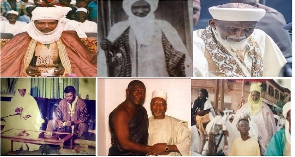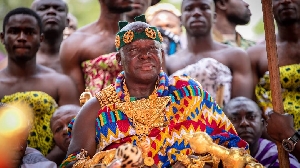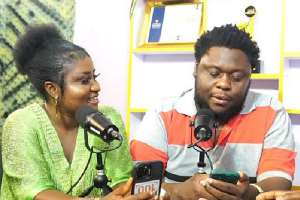Opinions of Wednesday, 19 July 2023
Columnist: Prof. Abbass Mohammed El-Khamis Ali
The history of the Hausa people in Ghana and their contribution to Ghana's national development
The Hausa people, primarily originating from present-day northern Nigeria, migrated, and settled in various regions of Ghana, particularly in Northern, Ashanti and Greater Accra. They brought their cultural practices, Islamic traditions, skills, and intellect both military and otherwise, which have had a
lasting impact on Ghanaian society.
One significant contribution of the Hausa people is the establishment of vibrant Zongo communities in Ghana. Zongos are neighborhoods or settlements founded by Hausas primarily inhabited by Muslim communities, often led by influential Hausa leaders. These Zongos serve as centers of trade, commerce, and Islamic education.
Some of the prominent leaders in Kumasi included Mallam Ali I, Alhaji Aminu Ali
II, Alhaji Abubakar Ali III, Mallam Salllaw, and Sultan Umar Farouk. Others in Accra include the Chief Imam of Ghana, Sheikh Osman Sharubutu and his father who came to Ghana as a military service man and fought several wars. Others in the North include the former Vice President of Ghana- Alhaji Aliu Mahama.
The establishment of Zongos also facilitated cultural and religious exchanges. Hausa scholars and Islamic teachers settled in these communities and established Quranic schools and Islamic centers. They imparted Islamic knowledge and values to the younger generation, ensuring the preservation of their cultural and religious heritage.
Some examples of a Hausa founded settlements in Ghana are the Kumasi Zongos (Ramin Kura, Yalwa, Langonto, Bompata, Aboabo, Asawase, etc in the Ashanti region and Sabon Zango, Adabraka, Fadama and Nima community in Accra. Kumasi Zongos have emerged to be the trading hub of Kumasi spanning from Roman Hill near Adum, Alaba near Kejetia and into Aboabo and beyond.
These areas continue to be buzzing and have become a hustling ground for trade, business and transportation. Nima has also evolved into a bustling neighborhood with a Hausa language as a lingua franca in a heterogenous demography. It is known for its vibrant marketplaces, where Hausa traders engage in various business activities. Nima has become a symbol of the Hausa community's presence and contributions to Ghana's economic and social fabric.
Another important contribution of the Hausa people is the provision of Hausa language as a Lingua Franca to Ghana. One of the primary reasons for the prevalence of Hausa as a lingua franca in Ghana is the historical migration and settlement of Hausa people in various parts of the country. As Hausa traders
established communities and engaged in commercial activities, the language naturally spread and became a medium of communication among different ethnic groups.
Hausa traders, known as "Zongo traders," played a crucial role in fostering economic interactions and cultural exchanges, further solidifying the use of Hausa as a common language. This was also further enhanced by their openness to
marry across all ethnic groups including Akan ethnic groups in Ghana and instill their languages in their children.
The use of Hausa as a lingua franca has also been reinforced by the presence of Hausa-speaking communities in Ghana. These communities have created vibrant social and cultural spaces where Hausa is spoken in day-to-day interactions. This includes neighborhoods known as Zongos, which are predominantly inhabited by Muslim communities, many of whom speak Hausa.
Hausa's status as a lingua franca in Ghana facilitates communication and fosters cultural integration among diverse ethnic groups. It allows for easier interaction between speakers of different languages and helps bridge language barriers in various settings such as markets, public transport and social
gatherings. This linguistic unity contributes to a sense of community and shared identity among Hausa- speaking communities and others who have adopted Hausa as a second language.
Moreover, the use of Hausa as a lingua franca has had implications for trade and business. Many Ghanaians, particularly in the north, have acquired proficiency in Hausa to facilitate commercial activities and engage with Hausa-speaking traders from neighboring countries. This linguistic competency has opened up economic opportunities and enhanced interregional trade.
However, it is important to note that the use of Hausa as a lingua franca in Ghana does not diminish the importance of other local languages or English as the official language. Local languages remain integral to ethnic identities and cultural preservation, while English serves as the language of education,
administration, and official communication. It is for these reasons that Hausa language was once considered among others in the discussions of adopting a second official language in Ghana’s parliament.
It remains a known fact almost every single Ghanaian understands one or more words of the Hausa language. One prominent aspect of Hausa cultural contribution to Ghana is their traditional attire in the form of "Babanriga", or “Patakari,” or "Agbada." This is a flowing gown or robe typically worn by both men and
women. The Babanriga is made from colorful and intricately patterned fabric, often featuring bold geometric designs or traditional motifs. It is usually paired with a matching headgear known as a "Fula" which adds an elegant touch to the overall ensemble. The Babanriga has become a symbol of Hausa cultural identity and is commonly worn during special occasions, festivals, weddings, and religious ceremonies.
In addition to the “Babanriga,” the Hausa people also have distinctive clothing styles for specific occasions. For instance, the "Kaftan" is a loose-fitting, ankle-length gown often made from luxurious fabrics like silk or brocade. It is commonly worn by both men and women for formal events and celebrations. The Kaftan is intricately embroidered or embellished with decorative elements such as beads, sequins, and threadwork, showcasing the Hausa people's craftsmanship and attention to detail.
The influence of Hausa clothing and dress extends beyond traditional attire. In urban areas, particularly in Accra, Kumasi, and Tamale, Hausa fashion trends have now blended with modern styles, leading to the emergence of fusion designs you see today across social media. Hausa-inspired prints, fabrics, and
embellishments are incorporated into contemporary clothing, creating a unique fusion of traditional and modern aesthetics.
This blend highlights the Hausa people's adaptability and their contribution to
Ghana's dynamic fashion industry. Furthermore, the Hausa community's entrepreneurial spirit has played a role in the clothing sector. Hausa traders, particularly women, are renowned for their involvement in the textile and fashion trade. They import and sell fabrics, accessories, and ready-made garments, contributing to the availability and popularity of Hausa-inspired clothing options in Ghana.













